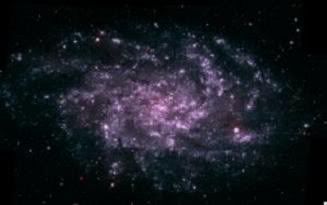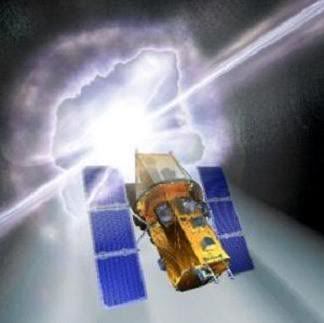Post by glactus on Feb 28, 2008 4:10:59 GMT

Imagine looking at a tree through eyeglasses that only allow red light to pass through. The tree is going to look a lot different than how it would look without the glasses.
The same goes for a galaxy when astronomers look at it through different types of telescope.
The Swift ultraviolet image shows M 33, the Triangulum Galaxy, so named because it resides in the northern constellation Triangulum.

An artist's impression of NASA's Swift spacecraft with a gamma ray burst in the background. The galaxy itself is about half the size of our Milky Way Galaxy, and is located about 2.9 million light-years from Earth.
The image clearly shows the spiral structure of M33. New stars are forming inside the spiral arms. These stars are very hot, and give off a lot of ultraviolet light. This light hits nearby clouds of gas, heating them up and causing them to also shine in ultraviolet light.
"The ultraviolet colors of star clusters tell us their ages and compositions," says Swift team member Stephen Holland of NASA Goddard. "With Swift’s high spatial resolution, we can zero in on the clusters themselves and separate out nearby stars and gas clouds. This will enable us to trace the star-forming history of the entire galaxy.”
"The entire galaxy is ablaze with starbirth," adds Immler. "Despite M33’s small size, it has a much higher star-formation rate than our Milky Way Galaxy. All of this starbirth lights up the galaxy in the ultraviolet."

To gaze in awe
credits:
This article has been adapted from materials provided by NASA/Goddard Space Flight Center, via EurekAlert!, a service of AAAS.
This is part text only. See image, full text and all scientists involved at sciencedaily.com
www.sciencedaily.com/releases/2008/02/080226092800.htm
M33 Image credit: NASA/Swift Science Team/Stefan Immler
Swift image credit: Spectrum and NASA E/PO, Sonoma State and sciencedaily.com
www.sciencedaily.com/releases/2007/03/070316091654.htm



